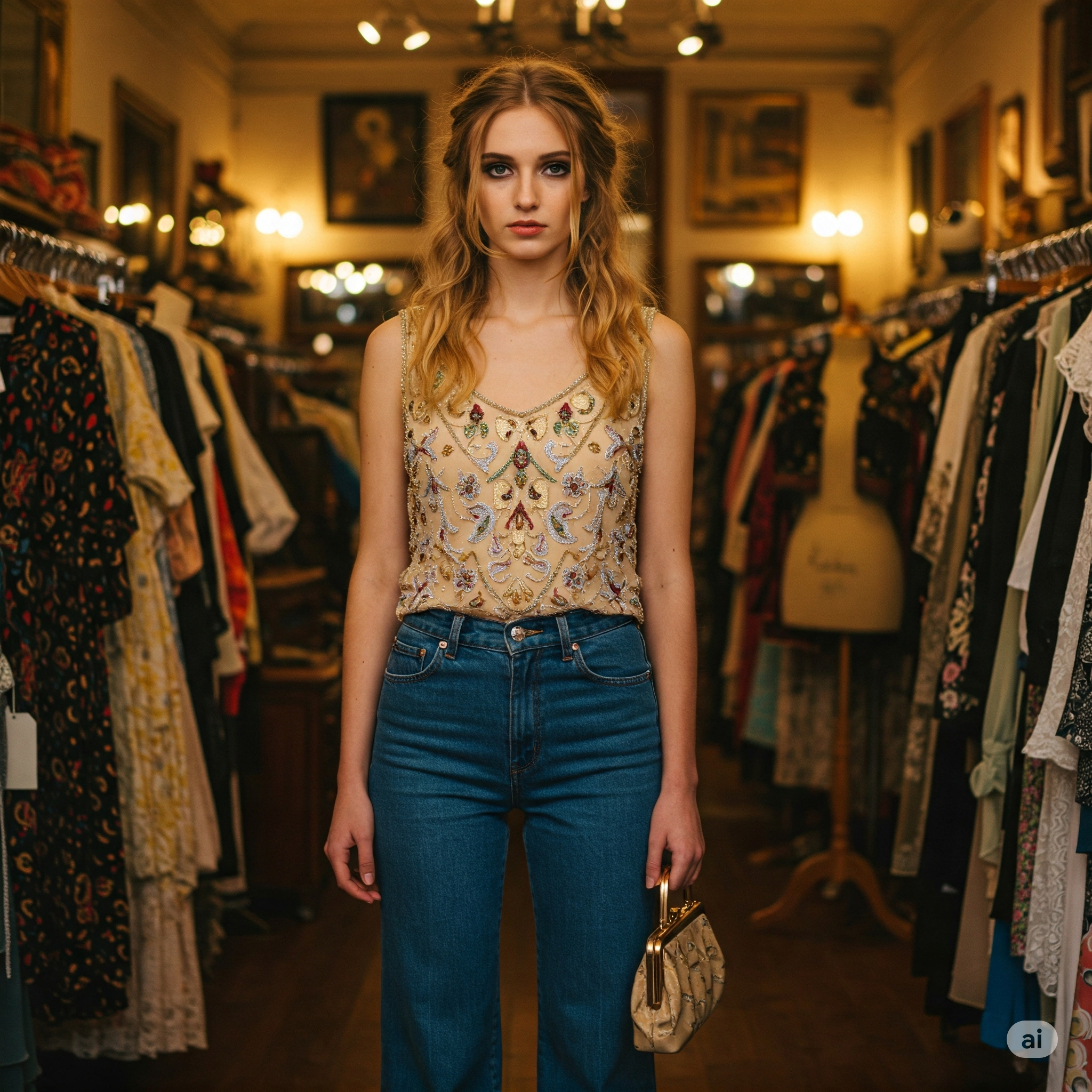Vintage fashion isn’t merely about wearing old clothes; it’s a celebration of history, craftsmanship, and individual style. In a world increasingly dominated by fast fashion and fleeting trends, vintage pieces offer a unique connection to the past, carrying with them stories and a sense of timeless elegance. This article delves into the enduring allure of vintage fashion, exploring its appeal, the different eras that captivate enthusiasts, and the sustainable and ethical reasons behind its growing popularity.
The charm of vintage often lies in its unparalleled quality and unique designs. Unlike mass-produced garments of today, vintage items were often crafted with meticulous attention to detail, using high-quality materials that have stood the test of time. From the intricate beadwork of a 1920s flapper dress to the sturdy tailoring of a 1950s suit, these pieces showcase a level of artistry rarely seen in contemporary clothing. Owning a vintage garment is like owning a piece of wearable history, a tangible link to a bygone era.
Exploring the vast landscape of vintage fashion reveals the distinct aesthetics of different decades. The roaring twenties, with their dropped waists, shimmering fabrics, and Art Deco embellishments, evoke an era of liberation and jazz. The 1940s, influenced by wartime austerity, present a more structured and utilitarian silhouette, yet with a subtle elegance in their tailored lines. The 1950s burst forth with glamorous full skirts, cinched waists, and playful prints, epitomizing post-war optimism. The bohemian spirit of the 1970s brought flowing fabrics, bold patterns, and a sense of individual expression. Each era offers a unique style vocabulary, allowing wearers to connect with a specific mood or historical moment.
Beyond aesthetics, the rise of vintage fashion is also intrinsically linked to growing concerns about sustainability and ethical consumption. The fast fashion industry is notorious for its environmental impact, from textile waste and water pollution to exploitative labor practices. By choosing vintage, consumers actively participate in a more circular economy, giving pre-loved garments a new lease on life and reducing the demand for new production. This conscious choice not only minimizes environmental harm but also supports a more ethical approach to fashion.
Finding the perfect vintage piece is often an adventure in itself. Exploring vintage stores, flea markets, and online platforms offers the thrill of discovery, the chance to unearth hidden gems and unique treasures. Unlike the uniformity of modern retail, each vintage find has its own story and character. This individuality is a significant part of the appeal, allowing wearers to curate a truly personal style that stands out from the crowd.
However, navigating the world of vintage fashion also requires a discerning eye. Understanding sizing differences across eras, identifying the condition of garments, and knowing how to care for delicate vintage fabrics are essential skills. Many vintage enthusiasts develop a keen knowledge of designers, materials, and historical context, adding another layer of appreciation to their finds.
In conclusion, the allure of vintage fashion is multifaceted. It’s a celebration of exquisite craftsmanship and timeless design, a journey through sartorial history, and a conscious step towards a more sustainable and ethical way of consuming fashion. As fast fashion fatigue sets in, the unique charm and enduring quality of vintage pieces continue to captivate a growing audience, ensuring its place as a significant and stylish force in the world of fashion.


